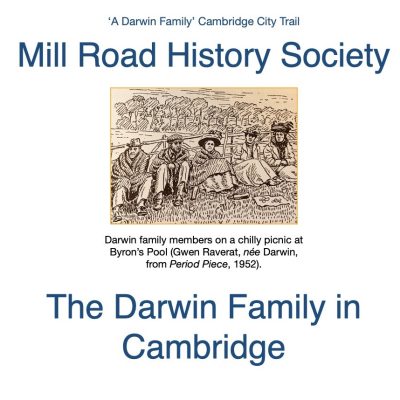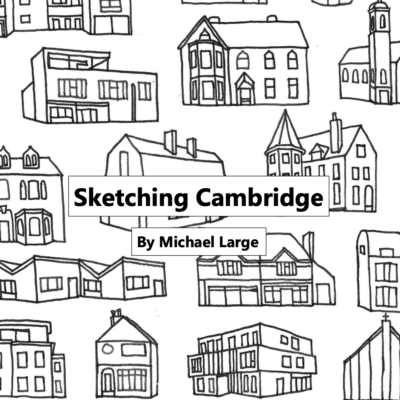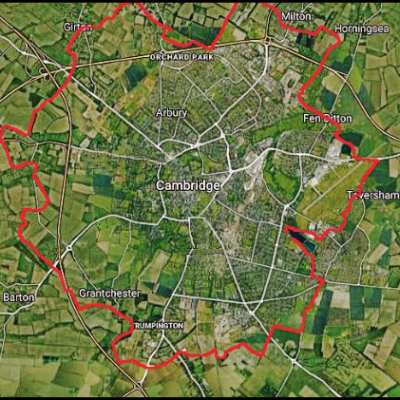Search by topic
- archaeology
- architecture
- bricklayer
- Building of Local Interest
- carpenter
- church
- crime
- dressmaker
- fire
- Great Eastern Railway
- listed building
- medieval
- oral history
- Public House
- Rattee & Kett
- Religious House
- Roman
- scholar
- school
- Then and Now
- tudor
- women
- work
- world war one
- world war two
Search by text
Tour 2 – Newtown area of Cambridge
Self Guided Tour of Newtown Cambridge
Preface
The list below of links to the Capturing Cambridge website is a selection of the more interesting entries en route. Information about most of the buildings, and their historical occupants, that you will pass on this tour, and many that have vanished, can be accessed on the web site.
As with our other tours, suggestions of corrections and additions are most welcome and should be offered via the email address on the website.
Note the City Council’s own study of this area:
https://www.cambridge.gov.uk/media/2844/new-town-and-glisson-road-area-appraisal.pdf
Guide
Start tour at Hyde Park Corner, meeting of Hills Road and Lensfield Road at corner with Catholic Church
2.1 Hills Road, home of the Wentworth family then the Roman Catholic Presbytery
3.2 Hills Road, Wanstead House, home of William Eaden Lilley then William Henry Guillemard
4.4 Hills Road, home of Canon Quinlivan
Turn right into Union Road
5.19-18 Union Road, Roman Catholic Day and Sunday School
7.29 Union Road, King’s Arms (site of)
9.30A Union Road, Jolly Brewers (site of)
11.34 Union Road (site of), Rifleman William Thomas Collins killed in action 16.8.1917
12.Cambridge Crystallographic Data Centre
Turn left into Bentinck Street
Turn right into Coronation Street
13.59 Coronation Street, grocer’s
14.Albion Brewery, Coronation Street (site of)
15.8 Coronation Street (site of), Charles Pammenter died 1.8.1918 while a prisoner of war
16.6 Coronation Street (site of), home of William Butcher and then Mrs Howes
Turn left into Panton Street
18.42 Panton Street, Lt Albert Henry Hearne killed in action 1.10.1917
19.52 Panton Street (site of), Private Stanley John Hearne, died of wounds 23.9.1917
20.SS Anthony and Eligius Almshouses, St Anthony Street
Turn left into Russell Court (Street)
21.58 Russell Street, The Alma
22.Salvaged carvings, Russell Court
Just before turning right towards Norwich Street, ahead across the playground is:
23.National School, Russell Street
Turn left into Norwich Street
24.Norwich Street, the numbering problem
25.72 Norwich Street, Cherry’s Stores
26.56 Norwich Street, Private Jessie Willard killed in action 1917
27.57 Norwich Street, setting of P D James novel
28.34 Norwich Street, home of the Goodman family who lost two sons in WWI
29.24 Norwich Street, a history of the property
30.6 Norwich Street, ‘In memory of Hilda’
31.2 Norwich Street, home of William Coulson coprolite merchant
32.Hills Road Weslyan Chapel (site of)
Turn right into Hills Road
33.74 Hills Road, boarding school in 1881 (site of)
34.76 Hills Road, home of William Chater, draper, brother of diarist Josiah Chater (site of)
Turn right into Bateman Street
35.62 Bateman Street, boarding school in 1901, home of Dr Walter Malden, pathologist with RAMC
36.1 Bateman Street, home of Clark family in 1871, then of American professor of pathology Frank Knowlton in 1911
37.3 Bateman Street, home of the ‘Cambridge Nightingale’ and the Shrubbery School
38.56 Bateman Street, home of Henry Swete, professor of Divinity
39.9 Bateman Street, home of Evelyn M Spearing, alumna of Girls Perse and Newnham College, then VAD nurse in France in WWI
40.55 Bateman Street, home of John Harold Clapham, economist
41.54 Bateman Street, home of congregational minister, Henry Child Carter
42.20 Bateman Street, home of Edward Gordon Selwyn, clergyman and fellow of Corpus Christi
43.51 Bateman Street, home of William Buckland, lecturer in Roman Law
44.27 Bateman Street, home of Vladimir Minorsky in 1962, Kurdish expert
45.49 Bateman Street, home of Edward Woodall Naylor, organist and composer
46.48 Bateman Street, ladies boarding school in 1901
47.46 Bateman Street, Paston House, work of architect Jack A Crush
48.St Mary’s Covent and School
49.75 Panton Street, home of musicologist Edward Joseph Dent
51.Cheshunt College & Masonic Hall
52.1 Brookside, University Botanic Garden
Turn right on to Brookside
53.Brookside, Trumpington Road
54.5 Brookside, home of Charles Babington, botanist
55.6 Brookside, home of Isaac Todhunter, mathematician
56.7 Brookside, home of Henry de Candole and John R S Taylor, clergymen, Alexander de Candole Cambridge student and poet, who was killed in action in 1918
57.8 Brookside, home of chemist Matthew Pattinson-Muir and Henry Tims, scientist
58.9 Brookside, home of Priscilla Sayle, widow, and Charles Travers Wood, significant figure in Boy Scout movement
59.10 Brookside, home of Francis Jenkinson, university librarian
60.11 Brookside, used by Belgian refugees in WWI
61.18/19 Brookside, home of Henry and Millicent Fawcett, Rev Edward Selwyn and Henry Fenton, chemist
62.20 Brookside, home of Louis Goss, benefactor to the University, Edouard Allen Goss, killed in action on the first day of the Battle of the Somme
Turn right into Lensfield Road
67.The Spread Eagle, home of Nelson Fielding, died of wounds 1915
68.65 Lensfield Road, home in 1891 of John Hodson of Hodson’s Folly
69.61 Lensfield Road, home of Rev George Weekes
70.57 Lensfield Road, home of Thomas Thompson, portrait painter
72.Lensfield (site of), home of Sir George Stokes mathematician and Laurence Humphrey, doctor
73.Scott Polar Research Institute
Contribute
Do you have any information about the people or places in this article? If so, then please let us know using the Contact page or by emailing capturingcambridge@
License
This work is licensed under CC BY-NC-SA 4.0













